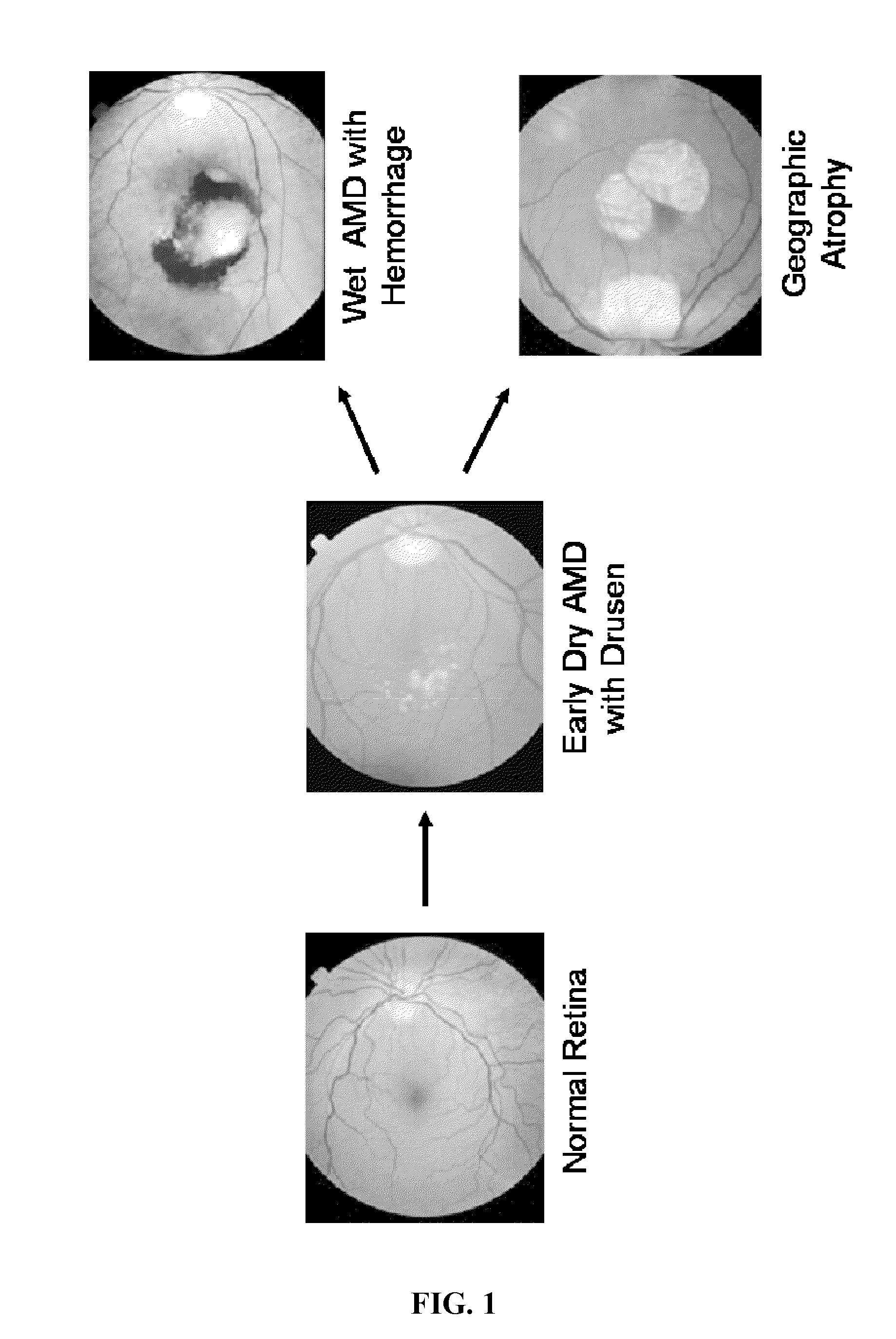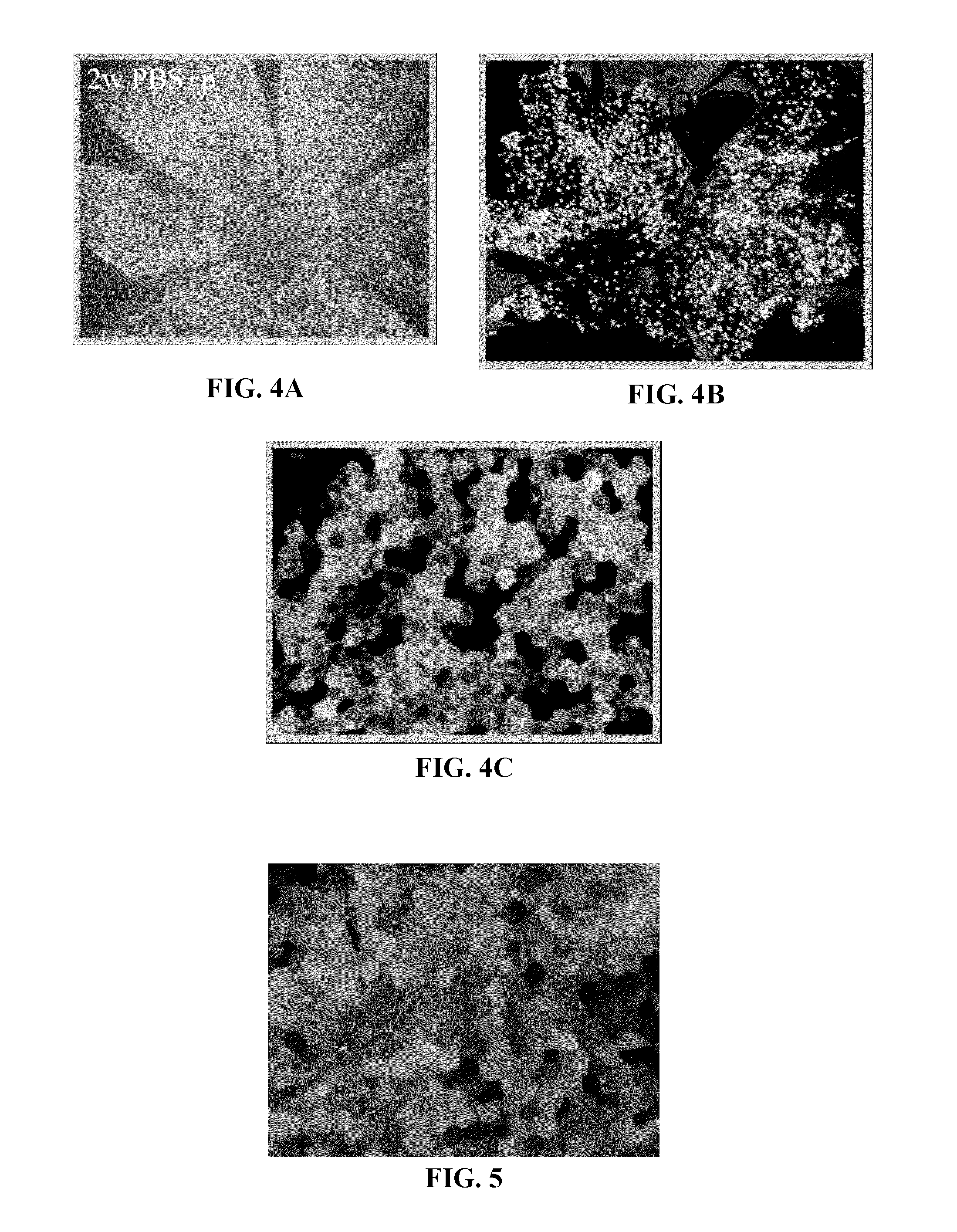Treatment of diseases characterized by inflammation
a disease and inflammation technology, applied in the field of inflammation-characterized diseases, can solve the problems of no effective amd treatment, uncontrolled activation of the alternative complement pathway, etc., and achieve the effect of less biological function
- Summary
- Abstract
- Description
- Claims
- Application Information
AI Technical Summary
Benefits of technology
Problems solved by technology
Method used
Image
Examples
examples
[0350]The invention is now described with reference to the following examples. These examples are provided for the purpose of illustration only and the invention should in no way be construed as being limited to these examples but rather should be construed to encompass any and all variations which become evident as a result of the teachings provided herein.
[0351]The inventors, inter alia, have determined that gene delivery provides an efficacious means of achieving sustained and continuous delivery of therapeutics to the eye. Embodiments of the invention will achieve sufficient gene transfer, sufficient gene expression, appropriate timing and distribution of expression and of the expressed protein therapeutic, negligible systemic distribution of the expressed therapeutic protein, appropriate biological activity of the expressed protein therapeutic, and / or an absence of or diminished immune response. The examples will outline vector delivery with BIV-based vectors, derived from a bo...
example one
Production of BIV Vectors
[0353]Some general production methods for BIV vectors are described in the literature, e.g., see Matukonis et al., 2002; Molina et al., 2004 as well as in U.S. Pat. No. 6,864,085 and PCT Publ. No. WO 03 / 066810. In some methods, four components can be used for vector production. These components, e.g., shown in FIG. 2, include: 1) the BIV transfer vector construct; 2) an expression construct encoding the BIV gag / pol polyproteins; 3) an expression construct encoding an envelope protein such as the VSV-G protein or baculovirus gp64 envelope protein; and 4) an expression construct encoding the BIV rev protein. The transfer vector construct contains the heterologous (therapeutic) gene and generates an RNA transcript that is packaged into the vector particles. The gag / pol and envelope constructs produce the capsid proteins that form the vector particle. The rev construct produces a protein that is required to transport the vector RNA out of the cell nucleus.
[0354]...
example two
Transduction of Rodent Retinal Cells In Vivo
[0358]A BIV vector efficiently transduced ocular cells in vivo in both rats and mice. For the rat and the mouse studies shown in FIGS. 3 and 4A, the GFP vector was concentrated by ultracentrifugation and formulated in PBS supplemented with 2% BSA. Polybrene at 8 μg / ml was added to the vector at the time of injection. For the mouse study shown in FIGS. 4B and 4C, the vector was concentrated by the chromatographic method of Example 1 and formulated in PBS. Polybrene was not co-administered with the vector. One to three microliters of vector encoding Green Fluorescent Protein (GFP) with a titer of approximately 1×108 to (transducing units) / ml were injected under the retinas, and the retinas were subsequently examined for GFP expression. The rats were followed for up to nine months and the mice were followed for up to five months. In both animal models, high level GFP expression was seen in the retinal cells at the injection site. Additionally...
PUM
| Property | Measurement | Unit |
|---|---|---|
| concentration | aaaaa | aaaaa |
| particle size | aaaaa | aaaaa |
| particle size | aaaaa | aaaaa |
Abstract
Description
Claims
Application Information
 Login to View More
Login to View More - R&D
- Intellectual Property
- Life Sciences
- Materials
- Tech Scout
- Unparalleled Data Quality
- Higher Quality Content
- 60% Fewer Hallucinations
Browse by: Latest US Patents, China's latest patents, Technical Efficacy Thesaurus, Application Domain, Technology Topic, Popular Technical Reports.
© 2025 PatSnap. All rights reserved.Legal|Privacy policy|Modern Slavery Act Transparency Statement|Sitemap|About US| Contact US: help@patsnap.com



